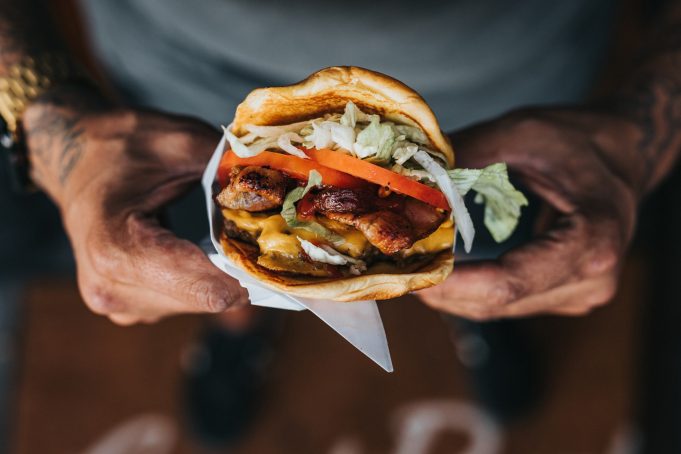In the US, food reigns supreme. The country has lavish food marketing tactics that are excessive compared to the rest of the world.
You could argue that this contributes to America’s high obesity rate, which is currently 36.2% and the 12th highest in the world. While the US government has pushed initiatives to encourage healthier lifestyles, including the Let’s Move campaign, marketers are still targeting Americans with junk food at a high rate.
With nations including the UK tackling junk food marketing, the US has some catching up to do. Electrix, supplier of goulottes électriques to food manufacturers, compares the USA to the world when it comes to food marketing.
USA – anything goes
When it comes to junk food, many people see the USA as the biggest producer and consumer in the world. TV shows like Man v. Food have highlighted the extremes some food producers in the US go to, featuring delicacies including a 7lb burger; a 72oz steak; and the Hawaiian Mac Daddy pancake – 3lbs of pancakes loaded with sauces, blueberries, and cream.
Many US junk food adverts have been banned across the world, with Paris Hilton’s now-infamous Carl’s Jr burger advert outlawed in New Zealand. When it comes to regulations in the USA, the Central Hudson standard is often used. This four-step test asks four questions:
- Is the ad misleading, and is the activity promoted lawful? (For example, saying that “these burgers are delicious” would not be deemed misleading.)
- Does the government have a valid reason for regulating this commercial speech? (For example, is it worth introducing regulation around junk food?)
- Will the regulation have the intended result? (For example, will introducing this legislation lower obesity?)
- Would the regulation be disproportionate to the advert? (For example, is there enough reason to warrant legislation based on the contents of this advert?)
Many argue that more should be done to regulate junk food advertising in the USA, with scientific studies showing a clear link between junk food advertising and overeating. However, because of the way the constitution operates, the high court often prioritises the protection of free and commercial speech. Currently, there are no plans to more strictly regulate food marketing in the USA, which puts it in direct contrast to some of the rest of the world’s plans.
The UK focuses on preventing child obesity
The UK has been on a health kick in recent years. From increased health initiatives that include government support for obese people to NHS public health campaigns, the UK is focusing on getting its people to a healthy weight.
This has been accompanied by a ban on junk food advertising online and before 9pm on TV. Deemed one of the toughest restrictions on food marketing in the world, the ban is scheduled to come into play by the end of 2021 and will apply to the advertising of foods that are high in fat, sugar, and salt (HFSS). It’s estimated over £600 million is spent on food advertising online and on TV in the UK, so this will have a far-reaching impact.
This legislation is designed to prevent childhood obesity, with shocking stats showing that young people are exposed to 15 billion junk food adverts online a year. The UK was the first nation to restrict the times in which food advertising was shown in order to protect children, as well as prohibiting it from channels aimed at kids, and this ban strengthens its position in this area.
More regulations required in France
In France, it seems we’re following the US more than the UK when it comes to our approach to junk food. A 2020 study found that in Europe, French children are exposed to junk food advertising the most. While a 2003 regulation required junk food advertising to include a health message, it’s clear more can be done to improve food marketing in France. Currently, junk food adverts must include one of the following lines:
- “Avoid snacking between meals”
- “Avoid eating too much salt, sugar, or fat”
- “Take regular exercise”
- “Eat at least five portions of fruit and vegetables every day”
A 2018 proposed ban on advertising junk food to children under 16 was not brought in, to much criticism. However, Sante Publique France, the publisher of the study, said the results should push the French government to take more action on food marketing to protect young children from obesity.
A petition was launched in 2020 for stricter regulations on junk food advertising after a UFC-Que Choisir study found that 90% of adverts aimed at children were promoting foods high in fat, salt, and sugar.
Germany imposes tougher regulations
Like the UK, in 2021 Germany introduced regulations on advertising junk food to children. Some restrictions were already in place, and the age covered by the existing code has been raised from 12 to 14. Advertisers of unhealthy foods are no longer allowed to attribute “positive nutritional properties” to their products, in order to prevent presenting them as healthy. The restrictions have also been extended to video platforms including TikTok and YouTube.
The current German Advertising Standards Council Code of Conduct on All Forms of Commercial Communication for Foods and Beverages, which went live in June 2021, contain updated regulations on food marketing. Some of the things food advertisers cannot do include:
- Undermine a healthy lifestyle or a balanced, healthy diet
- Encourage excessive consumption of unhealthy foods
- Abuse the consumers’ confidence in the quality of the foods
- Encourage overconsumption of foods that have a negative nutritional or physiological impact
It’s clear from these regulations that public health is important in Germany.
The USA has a reputation for excess, and this can be said of its food marketing. Many of its regulations are voluntary, while American courts have historically been reluctant to implement tougher restrictions. The UK and Germany are leading the way in regulations on junk food advertising aimed at children, and there are renewed calls in France for tougher restrictions as the country is lagging behind its European counterparts.










